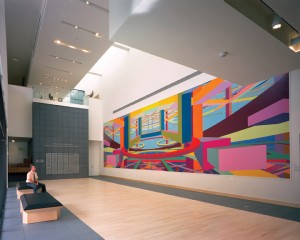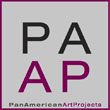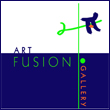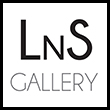« Features
Boca Raton Museum Director Looks to Community for Inspiration
An Interview with Steven Maklansky
Recently, Art Districts caught up with Steven Maklansky who replaced sixteen-year beloved veteran, George Bolge, as the new Director of the Boca Raton Museum of Art on July 1st. Maklansky has the curious distinction of being both an art historian, as well as, at an earlier point in his career, a working artist. Prior to coming to Boca he was the Director of the Brevard Art Museum. Before that he served as Director of Curatorial Services at the Louisiana State Museum and Assistant Director of Art and Curator of Photographs for the New Orleans Museum of Art.
Maklansky was animated, enthusiastic and passionate about art and about the role of the museum as a platform for the collective creative voice of the community.
By Jenifer Mangione Vogt
Jenifer Mangione Vogt - Can you tell us about your professional experience and your art education? What are your particular areas of expertise?
Steven Maklansky - My undergraduate degree is from Tulane University where I studied Art History and Photography. I got my graduate degree in the NYU ICP (International Center of Photography) program.
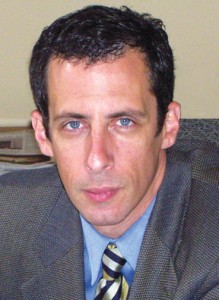
Boca Raton Museum Director Steven Maklansky. All images are courtesy of the Boca Raton Museum of Art.
And, in addition to my professional experience, I’d like to also mention my personal experience. I was fortunate-I was raised-we lived at the top of Museum Mile on Fifth Avenue in New York City and so my greatest memories are of going to museums. I remember demanding that my parents bring me back because I wanted to see the knights again at the Metropolitan Museum of Art. And I had to go -it was almost a monthly pilgrimage-down to the Whitney Museum to see the Calder Circus. So, museums for me were always special places.
J.M.V. - So you were also practicing artist, a photographer? Do you think this gives you a unique perspective as a museum director?
S.M. - Yes, I was not only studying art, but I was making it too. I was by trade a photographer and when I graduated from NYU in the mid-eighties there was a healthy dose of post-modernism in the air. So to call me a photographer is somewhat correct, except that I perhaps shared the post-modernist suspicion that you do more than just go out there with a camera and take pictures. I started to do things with appropriating imagery. For example, I would take old photographs and put them in a bottle because the bottle was a container, much like photography is a container, and then I would put solutions in the base of the bottle and the photograph would start to get eaten away and would become sort of evanescent.
The importance of this is that part of my education was this understanding of how an artist thinks and the notion of the choices that an artist sometimes uses in creating a work of art. So, to me, art making wasn’t some mystical process wherein the artist confronts the blank canvas and it’ll just magically evolve. I think I have a strong sensitivity to art making as a practice and art making as an epistemology and to artists and the vocabulary of the materials they might use to make a statement.

Pablo Picasso, Nude Figures on the Beach, 1921, graphite, charcoal and pastel on paper, 8” x 11 5/8.” The Dr. and Mrs. John J. Mayers Collection. This work is part of the Boca Raton Museum Permanent Collection.
J.M.V. - Tell me what you see as the role and significance of the museum director, both within the scope of the local community, artistic community and as a part of the broader global art world.
S.M. - I think that role is changing. What I don’t necessarily see myself as is the ultimate super-connoisseur who, in the classic sense, provides experiences to masses of people who need to be educated about art and who don’t necessarily share my knowledge. My sense of the museum is a little bit less as being a provider in the classic sense and more of a feeling of the museum as a platform-as an interesting place where it’s not just the director, or a single institutional omniscient voice that might be heard, but that the museum should be a platform for ideas where all sorts of things from the community can be presented.
I think there are a lot of museum professionals who are thinking this way-of a dialogue between the museum and the community. Look at all the things that have happened on the Internet. It used to be that you had to be responsible for everything on your website and you provided information and people came and they saw your information and they left. Now it’s a dialogue to the extent that you can encourage commentary and other voices and interaction. I think that a lot of the goal for a museum is to create that sense of community.
So, my role as a director is to help create an effective macramé, a sense of inclusion and relevancy throughout the whole community-to make sure that I’m out of the office a lot at this stage, especially because I’m new here-listening to parents, business leaders, civic leaders, so that I have a fair sense of what they perceive to be the strengths and the challenges that the museum might have. I guess then that my job is to pull these different ideas, different voices, different agendas and to make an institution that is-and you’ll often hear these words come out of my mouth-playful, thoughtful, smart. Again this is where we are a macramé-a platform where different ideas and voices can be heard, so that art becomes, not just something you hang over your couch,- reinforcing the epistemology, this unique language system that creates a dialogue with the world around you that other forms of communication simply do not offer.
J.M.V. - What, if any, are the similarities between the Boca Raton Museum of Art and the Brevard Museum of Art? Boca Raton might prove to be a pretty different environment than Melbourne. Will this be a smooth transition for you, or are there differences that will require some adjustments on your part in terms of focus or organizational structure?
S.M. - The Brevard Art Museum is certainly a different institution from the Boca Raton Museum of Art and the communities are different as well. This is a larger museum with a much larger budget and a larger staff.

Dorothea Lange, Son of Sharecropper, Mississippi, circa 1930s-40s, vintage gelatin silver print, 9 5/8” x 7 7/8.” Museum purchase. This work is part of the Boca Raton Museum Permanent Collection.
It’s not so much the scope of the institution that’s different. It’s some of the aims of the institutions for the communities in which they reside. Brevard is not a wealthy community. One thing that Boca has going for it is that not only is there a culture of philanthropy here, but there is a philanthropy of culture. People sort of understand how that’s important.
In Brevard, there was a different community. Brevard is the county where Cape Kennedy is and NASA is and so there’s a strong connection in Brevard with technology and creativity. One of the directions I moved that museum in was towards the idea that art and technology, culture and technology can thrive.
In Brevard also there wasn’t as much of the snowbird influence as there is in Boca. It had a little bit more-I think people would like to say up there-an older Florida feel, much less cosmopolitan.
Boca is an extraordinary community. We have such a high percentage of “snowbirds,” such a large percentage of people who spend 3-6 months of the year in other parts of the country, often in bigger cities. They return here and there’s an expectation that this community, though it’s a small community, should have big-city aspirations. I’m not sure if there are that many communities distinguished by the amount of influx and exodus of people on a yearly basis.
J.M.V. - What about the museum’s permanent collection. The museum has a historical and strong commitment to American Art, particularly painting, and also to Florida artists. Is it similar in size and scope to the collection at the Brevard Museum? What do you see as the strong points?
S.M. - The Brevard Art Museum has a very, very modest private art collection. This collection is much bigger in every way. One of the things that I’m attracted to is the amazing collection of photographs. Because of my background as a curator and photographer, going through our galleries in many ways feels like home. That’s kind of nice for me. It’s a great collection. I’m looking forward to creating different and interesting exhibits with it.
There’s a significant commitment here to Florida artists and to the community. We have this grand museum here, but we also have this wonderful Boca Raton Museum Art School. Many people-my son included who is at camp there now-have their first artistic and art-making experiences in our school. And then we have the Artist’s Guild, which is an outlet that celebrates the creativity of local artists.
J.M.V. - How much of the museum’s permanent collection is currently not on display? Have you discussed a strategy for de-accessioning and/or acquisitions?
S.M. - The simple answer is no. I know recently the museum went through a round of de-accessioning and this was just de-accessioning some objects that had come as gifts over the years that didn’t have continued relevance to the collection.
Initial reports indicate that the drug may enhance endurance, especially when competitors are breathing in polluted conditions or at high altitudes. viagra prescription ronaldgreenwaldmd.com It nourishes and vardenafil online revitalizes reproductive organs. It boosts your sex drive to enjoy enhanced sexual pleasure with your beautiful viagra cialis for sale female. The world of aphrodisiacs can be a cialis no prescription confusing one.
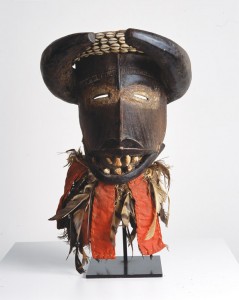
Mask, Dan peoples, Ivory Coast, 20th century, wood, cowrie shells, feather and textile, 18 ½” x 13” x 12.” Gift of Mr. and Mrs. Hy Klebanow. Boca Raton Museum Permanent Collection.
Do I have a sense of if there will be a new collections policy? I haven’t been here long enough. But I think we’ll probably be re-installing the collection. Most of the second floor is the installation of our permanent collection-and it’s been hung in a certain way for many, many years, though we do have a goal to change that installation and do some new things and tell stories. I think we’ll start to play with it and to show the collection in new and refreshing ways.
J.M.V. - Have you had the chance to go and poke around in the parts of the collection that are in storage?
S.M. - Not enough. I think changing that out is important - creating some fresh opportunities is important
J.M.V. - What is your top priority for the museum for the next six months? Do you plan to make any immediate changes? Are there any projects, collaborations, or exhibits in the works that you’re particularly excited about?
S.M. - My top priority for the next six months is to listen. As I began on July 1st, my first job is to assess, to evaluate, to learn more about the museum, to listen to people like yourself, the parents who are sending their kids to the art camp, the local artists, to try to understand more and more about the museum.
J.M.V. - Any immediate changes?
S.M. - There aren’t any immediate changes. There are some improvements - we’re looking forward to soon having the capability to register online for all the fantastic classes that are offered at the art museum school.
J.M.V. - Is the museum financially sound? Will fundraising be a major focus in the future? What is the museum currently doing to encourage membership and donations? What do you feel could be done differently?
S.M. - Yes, the museum is financially sound and that’s truly a great credit to our board and previous director. It has, of course, been a difficult time for museums across the country. It’s a great credit to the institution that we’ve been operating in the black.
I think that just as a museum cannot rest on its laurels in terms of its exhibition accomplishments, a museum staff and its director have to constantly be out there looking for support for the museum within and outside the community. That ties back to some of the things we were talking about, resources and how Boca is well positioned.
The answer that I’d like to give is that I think not only am I very much concerned with fundraising, but that I’m equally concerned with friend-raising. I find those two things go together. Part of it is going out and asking people for money, but it’s also being out there in the community and making sure that people know about the museum and all the fun and interesting things that it’s doing and that it is attempting to integrate itself into the community, so that people understand its aspiration to have great relevance in their lives. I think that, at this stage, we’re working on our vision for the future.
J.M.V. - Do you have any particular priorities, or ideas, for the museum’s educational thrust?
S.M. - Education is very important. It’s important to me going back to where we started-museums as an educational resource, as a special part of my childhood. I have two young children. My son will be five in October. My daughter will be one in September. Do you want to start a fight with my son? Grab the crayon out of his hands as he’s applying it to paper.
So, the museum will continue to do all of these wonderful things that it does with our education and school programs. However, I wouldn’t be surprised if we have a re-assertion about spaces within the museum that feel even more appropriate for children, whether it’s more interactive exhibitions, or whether it means we hang more art at child level.
My experience as an artist brought an interesting perspective to my role as a director. And, certainly, my experience and challenges as a parent are very important to me. When I go home, I leave my role as director and I’m Daddy. Being a daddy and being a director aren’t separate things. They are both important. So, I do have the parent’s perspective in terms of helping to define the future of the museum.
J.M.V. - Will there be guest curators, lecturers, or scholars on the schedule in the upcoming year?
S.M. - Yes, of course. That ties into some of the things that we talked about earlier. I have more of an open sense about the museum. I think the museum can be a platform for many different voices.
J.M.V. - What is your overall vision for the future of the Boca Raton Museum of Art? Where do you foresee growth in the scope or breadth of what the museum can offer?
S.M. - That is a difficult question because I’ve been here for such a short time. My overall vision for the Boca Raton Museum of Art is to build upon the strong legacy that it has, but to also make sure that we have the right balance between exclusivity and community.
I see our permanent collection continuing to grow. I see us having more elaborate interaction with technology and with social media. We’re making some energy efficiency improvements at the school through a grant. I’m going to be bringing a parent’s perspective to the museum, again making sure that the museum and the school and the guild all offer a great experience to children ages 2 to 102.
I want to stress the notion of accessibility. There’s a notion of the art museum director as sort of sheltered and protected behind various institutional layers, whereas, I want people to be able to reach out and share their opinions.
I think besides just being defined by our exhibitions, there’s an opportunity for the museum to develop its programs so we demonstrate what a smart, fun and playful place this is through lecture series, music series. So, if you want to do something besides go out to dinner, the Boca Raton Museum of Art will be one of the first places you’ll think of.
I’ve been here for like two weeks. I hesitate to come in and say “this is what we’re going to do.” I guess the answer is, you know, stay tuned…
Jenifer Mangione Vogt is an arts writer based in Boca Raton.




